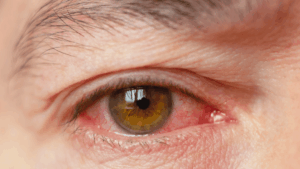
Retina
Memahami Uveitis
Uveitis adalah peradangan pada uvea (lapisan tengah mata), yang meliputi iris, badan siliaris, dan koroid. Kondisi ini dapat menyebabkan nyeri

Uveitis adalah peradangan pada uvea (lapisan tengah mata), yang meliputi iris, badan siliaris, dan koroid. Kondisi ini dapat menyebabkan nyeri

Corneal cross-linking (CXL) untuk mata adalah perawatan bedah untuk mengatasi kondisi yang memengaruhi kornea, permukaan mata yang transparan. Prosedur ini

Apakah Anda baru-baru ini melihat kilatan cahaya atau floaters di penglihatan Anda? Apakah sebagian bidang penglihatan Anda tertutup oleh bayangan